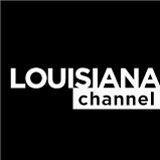Video Type
Meet the truly original video artist Mika Rottenberg! Here she shares the fascinating story behind her take on Orwell's 'Animal Farm' – a work in which a group of women with extremely long hair turn things around – and take fate into their own hands.
The video-installation ‘Cheese’ (2008) pays tribute to the American long-haired Sutherland sisters from the late 1800s, who grew their hair long and marketed a new shampoo, a so-called ‘hair fertilizer’. This marketing-scheme ultimately made them millionaires and enabled them to hire “surrogate-sisters,” who could do their work for them – “the first American supermodels,” the artist calls them. She came across the story of ‘The Seven Sutherland Sisters’ when searching for people with long hair online, which is typical of how she likes to use people, who have something exceptional about them.
At the same time, Rottenberg stumbled upon a contemporary club for people with very long hair. When she contacted one of them, she was invited to their annual hair-convention in Florida. This sparked her desire to make a video inspired by the story of the Sutherland sisters, and she ended up building a location on the farm she stayed at for almost a year. The long-haired women were hired for a week to stay, although the collaboration didn’t go as smoothly as the artist had imagined: “They needed to wash their hair, and it took 24 hours for the hair to dry, and I had five days to shoot, so they couldn’t take 24 hours. So we made meetings and agreements – their long-hair-union and me – and they could wash their hair in turns, and somehow it worked out.”
“It was a very strong experience, because we were all the same space for a week.” The set for the cheese farm soon became more than just a set, as they used it as a real farm, where they worked with goats and grew things. Mistakes and random movement were also built into the architecture of the set, reflecting the things happening on the farm, like when a goat escapes. Moreover, though Rottenberg was inspired by George Orwell’s novella ‘Animal Farm’ from 1945, she is reluctant to call the video directly political: “There is this shift in power… from milking the animals they milk themselves.”
Mika Rottenberg is a video artist born in 1976 in Buenos Aires, Argentina, raised in Tel Aviv, Israel, and now based in New York City. She is best known for her video and installation work that often deals with the subject of female labour. Working in video, installation and sculpture, her video works often feature women with unconventional bodies, who perform physical acts that reflect the human condition in post-modern times. Solo exhibitions of Rottenberg’s work have been shown at prominent venues such as P.S.1 Contemporary Art Center in New York (2005), and her work has been included in major exhibitions including the Museum of Modern Art and the Solomon R. Guggenheim Museum in New York, the Havana Biennale (2000), the Moscow Biennale (2007) and the Whitney Biennial (2008). Rottenberg is also the recipient of numerous awards including The Cartier Award at the Frieze Art Fair in 2006.
Mika Rottenberg is a video artist born in 1976 in Buenos Aires, Argentina, raised in Tel Aviv, Israel, and now based in New York City. She is best known for her video and installation work that often deals with the subject of female labour. Her work has been exhibited at the Tate Modern, London, and in the Whitney Biennale, Solomon R. Guggenheim Museum and Museum of Modern Art, New York. Solo exhibitions of Rottenberg’s work have been shown at prominent venues such as MoMA P.S.1 Contemporary Art Center in New York. Rottenberg is also the recipient of numerous awards including The Cartier Award at the Frieze Art Fair in 2006.
Mika Rottenberg was interviewed by Christian Lund at Den Frie Centre of Contemporary Art in Copenhagen in November 2016. In the interview, Rottenberg discusses and shows her video-installation ‘Cheese’ (2008).
Camera: Klaus Elmer
Edited by: Roxanne Bagheshirin Lærkesen
Produced by: Christian Lund
Cover photo: ‘Cheese’ (2008) by Mika Rottenberg
Copyright: Louisiana Channel, Louisiana Museum of Modern Art, 2017
Supported by Nordea-fonden
Comments
Brought to you by LOUISIANA






